There’s been a long-standing division between sales and marketing that’s frequently discussed but few organizations have been able to resolve.
On the ground it might seem like an age-old cultural friction but a survey conducted by Demand Gen shows us this lack of alignment between sales and marketing will directly impact your bottom line.
Lamenting over the issue brings to mind sales pointing at marketing, placing blame for poor lead quality on the campaigns and activity of the marketing department.
On the flip side, marketing feel like they’re generating perfectly good leads, and there’s no reason a good sales team shouldn’t be able to close them.
I’ve been on both sides of the fence, and while those sound like typical scenarios, the study from DemandGen shows that contention over leads isn’t the biggest concern. The main issue is that the departments aren’t talking. There’s tremendous opportunity for the sales team to leverage content and resources provided by marketing. Likewise marketing can learn a lot about customers, barriers, and pain points from sales.
But that’s not being effectively deployed.
Nearly half of respondents point to communication as the top issue while 43% said the problem has to do with flawed and broken processes.
Among sales teams, 37% want more lead nurturing and improved brand awareness.
Subsequently, 15% of marketing respondents are seeking better feedback on campaigns and 34% would like to see improved lead follow-up once content campaigns and inbound marketing drive those leads to the sales team.
Without strong communication between sales and marketing, it becomes far more difficult for both departments to get their needs met and achieve goals. This is because:
- Marketing isn’t providing updated audience insights
- Sales isn’t communicating new barriers among leads
- Sales won’t know what content can be used to assist with closing
- Marketing can’t generate new content for bottlenecks in the sales funnel
- Both departments are out of sync on the buyer’s journey
When you begin to close the gap between sales and marketing you’ll immediately see an improvement in the data and resources that travel in both directions; sales can provide deeper insights into audience relationships and marketing can use that data to provide sales with a wealth of targeted content.
It’s a mutually beneficial relationship that makes everyone’s job easier.
Sales can in turn use that content to delight current customers, build relationships with leads, improve engagement, and close more deals.
Here how your sales team can add content marketing to their processes to significantly improve conversions.
Transform Sales Representative into Thought Leaders
The first, and arguably most important, step is to change the mindset about the role of sales and how they position themselves with your audience.
Traditionally, a sales rep only connects with a lead as part of the buying process and engagement revolves around passing product/service supportive information to close a sale. Filler talk doesn’t really count.
Nothing about that approach is going to help close the deal unless the lead has made up their mind and they’re ready to buy. In most cases the purchases you get have little to do with the sales rep because there’s virtually no trust or established relationship.
You can change that by transforming sales into thought leaders.
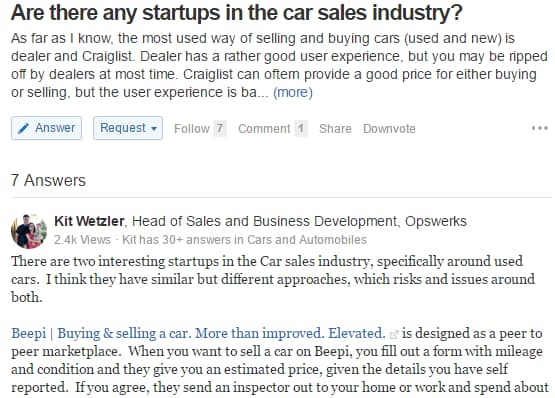
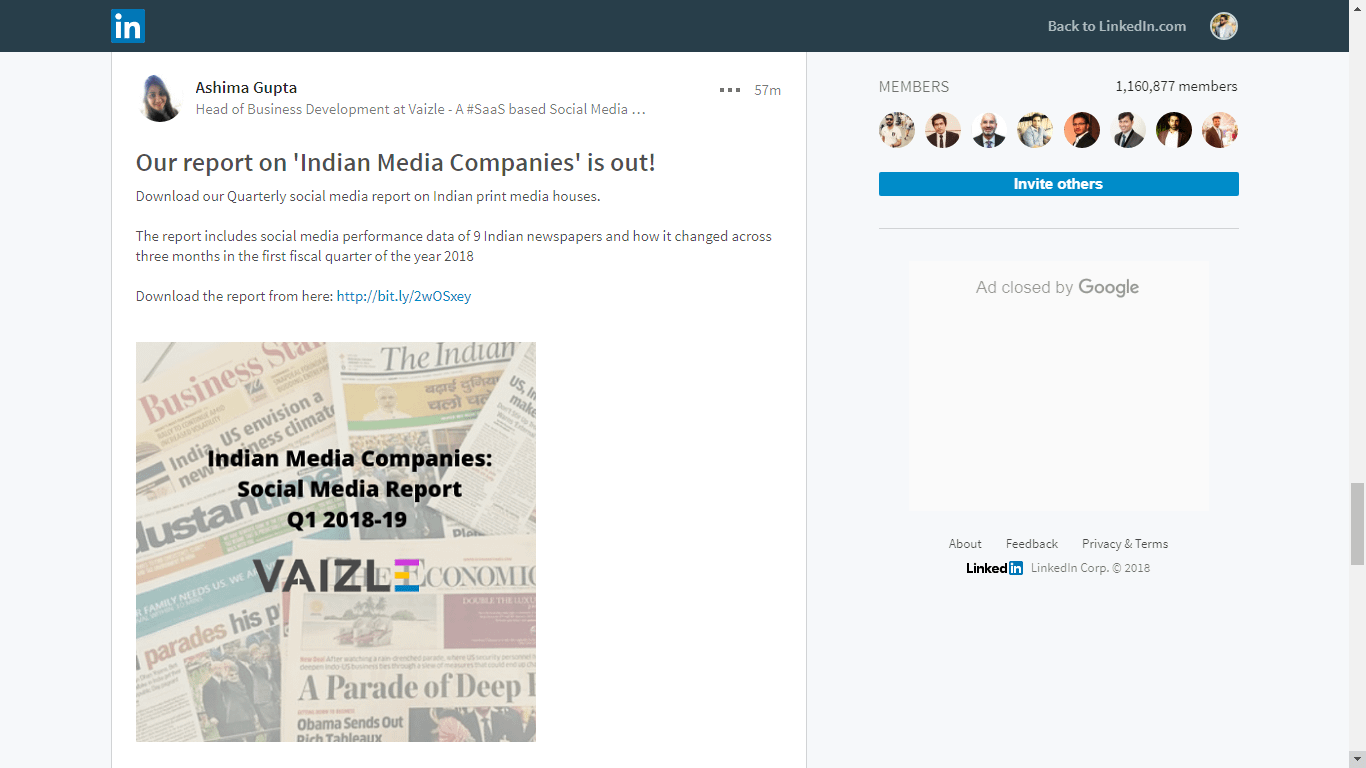
How to Deploy:
- Have sales create social profiles and join relevant groups
- Find discussions/questions and start engaging (without promoting)
- Connect to leads on sites like LinkedIn and other social channels
- Engage leads directly, commenting on posts they make
- Share company content and relevant curated content
- Empower sales to create content through channels like LinkedIn Pulse
- Optimize social profiles (especially LinkedIn) with rich content like videos, ebooks, high value articles and testimonials videos or customer interviews
Develop Content Based on Specific Needs
Your audience is likely to share similar pain points or problems that your product/service will solve. Beyond those primary needs, every lead is going to have individual pain points specific to their business.
By listening closely and paying attention to connections through social, sales can identify opportunities to share content specific to that unique pain point.
For example – a lead makes a post that their company may be hiring a marketing agency but they’re open to expanding their in-house team if they found the right candidate – so they’re putting feelers out for referrals.
In that situation, sales could source a high value white paper or article on how to select a marketing agency, or perhaps an article on the best ways to lure top talent from competitors.
If you don’t see obvious opportunities like that, but you know of needs, wants, or concerns among your audience then share company content, or curate content, that will bring value to those connections.
How to Deploy:
- Monitor the social activity of leads including posts and group discussions for cues on pain points and needs
- Share company content or curate related content that can provide a solution (or path to a solution)
- Focus on providing value and education; be helpful, not promotional
- Share content to specific connections, and also regularly share targeted content with your entire audience as well
Team Up with Marketing
The marketing team works tirelessly to generate an endless stream of leads through inbound efforts like content marketing. Much of their efforts are based on audience research that’s part data-based, part speculation.
When the communication opens up between sales and marketing your sales representatives can feed a lot of insight, such as the unique pain points and needs they discover through direct social engagement and monitoring.
As data is shared, audience segments will become more refined.
Don’t just limit communication to weekly or bi-weekly meetings. Keep communication constant and flowing between departments. Slack is a great tool for this process and it even has a free option with unlimited use (but limited features compared to its premium plans.)
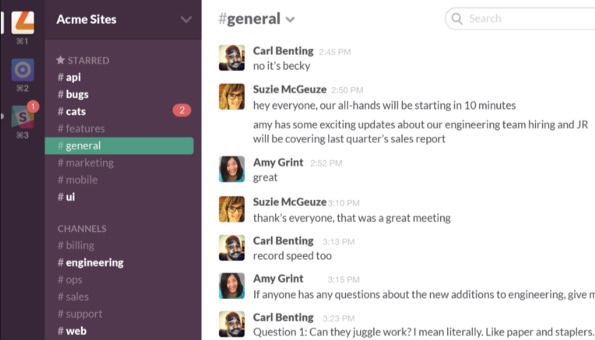
I once worked with a sales manager who shared his frustration over prospective wholesale customers who complained about budget struggles and the loss of customers to local competitors.
Because it was a recurring problem, and not specific to any particular region, I had our internal marketing team create a comprehensive ebook on local marketing. The sales team was able to share this resource with prospective buyers.
It strengthened buyer relationships and led to a 15% lift in lead closure for the sales team.
In one study from the Aberdeen group, companies that had better communication and alignment between sales and marketing saw a 32% increase in growth. Those still suffering a misalignment saw, on average, a 7% dip in earnings.
Sharing information is an important step in getting the right content into the hands of your sales team so they can use it effectively.
How to Deploy:
- Schedule regular meetings so department can brief one another and share information.
- Use tools like Slack, Hipchat, or Facebook workplace to make communication among teams more fluid. This is especially useful for quicker deployment or if structured meetings aren’t preferred.
- Make sure you’re tracking content metrics to monitor the performance of new content.
Better Lead Nurturing
A lot of organizations focus their efforts on lead acquisition, creating content primarily for the top of the funnel. According to data from Content Marketing Institute’s 2016 Benchmark, Budget and Trends, 85% of marketers feel that lead generation is their most important goal.
Beneath that:
- 78% focus on lead nurturing
- 74% believe customer retention is important
But that engagement and lead nurturing happens on the marketing side, typically via email. That still leaves around 25% of companies that don’t believe lead nurturing is a priority. Their marketing stops after the top of the funnel.
The work doesn’t stop at lead generation, and thinking otherwise will cost your company substantial revenue. In fact, 79% of leads generated will never convert into a sale. The biggest culprit for this poor performance?
A lack of lead nurturing.
When your sales team actively shares helpful content and nurtures the relationship you’re not just increasing the velocity of a lead closure, you’re greatly increasing the revenue generated by that individual lead.
Companies who excel at lead nurturing generate 50% more sales ready leads at a fraction of the cost, because nurtured leads produce, on average, a 20% increase in sales opportunities.
A nurtured lead makes 47% larger purchases than your typical lead, and with a stronger relationship that lead is likely to remain a customer for a longer period, ultimately increasing the lifetime value.
This is especially important for a SaaS business with a subscription model. As much as 95% of revenue is generated after the initial sale so it makes sense for your sales team to do everything they can – including leveraging valuable content – to nurture the leads they’re working with.

How to Deploy:
- Have sales reps create and manage their own email list with the support of marketing to regularly engage leads on a more personal level, rather than relying on general email blasts.
- Source relevant content like eBooks, whitepapers, and expert discussions and send it to directly to leads; be specific about why they might find the information useful. Mention pain points.
- Curate information on industry news, market changes, tech changes and other info that can impact your leads. Create roundup posts or emails sent to individual leads.
- Create a process for marketing to communicate new/updated content with sales so that content can be relayed to leads as it goes live.
Become a Connector
One of the most effective ways to improve relationships and close more leads is to remember that your prospective customers have marketing needs of their own. Their company needs to produce content and improve brand visibility just like yours, and they’ve got their own marketing efforts to think of.
As your sales team builds connections with leads, partners, and influencers they can share those connections with other people in their network.
Go out of your way to help your connections and provide value where you can.
Here’s an example – if your team knows that a lead is working to expand their content marketing efforts, or is interested in leveraging branded content, you can introduce them to an editor for a publication or an influencer who may be willing to provide guest blogging.
Make an effort to turn your team into connectors, and help leads hook up with influencers and other businesses that may have similarities or run parallel to one another without being competitive.
How to Deploy:
- Introduce leads to influencers who regularly share high value content relevant to their needs or industry
- Provide them with contacts who can help with operations, customer service and especially marketing efforts
Give Leads the Resources to Close the Deal
At some point your sales team is going to convince their lead that you have the ideal solution, and they’re ready to make a purchase. If you’re dealing directly with a primary decision maker, executive or owner then you’ve got the sale.
Unfortunately, your sales team is more than likely going to engage with someone that can’t make the final decision. Once convinced, that lead then has to turn inward and get approval from their leadership.
An easy way to tackle this: create a SlideShare or presentation rich that is with data points, benefits, and insights that the prospect can use to sell an idea up the chain.
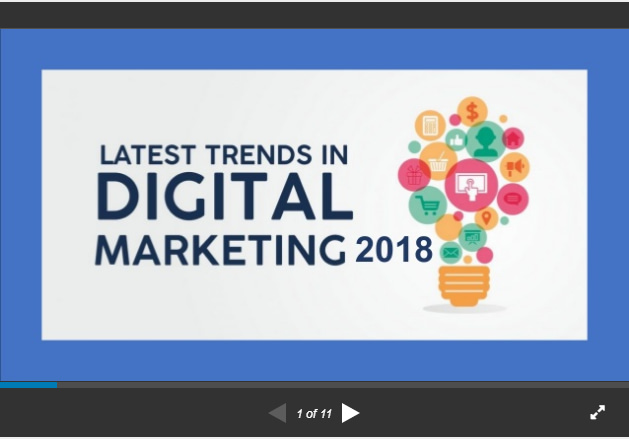
How to Deploy:
- Have your sales and marketing teams meet regularly to discuss barriers and ways to improve selling your solution.
- Task marketing with creating slide decks, case studies, videos, and data driven infographics that are designed to address barriers, questions, concerns, and pain points of decision makers. These are your go-to assets at time of close.
- Ensure sales have an inventory of content assets they can lean on and know when to use them. Don’t just do a content dump on every lead; providing targeted content that fits the situation at time of close.
Reinforce the Top of the Funnel
Your sales team will regularly encounter questions and concerns during the sales process. Leads will ask, “how do I…�? and “how does it…�? It’s natural for your team to address the question and move on with the sales process.
Don’t let them get away with that – every question is an opportunity to reinforce content at the top of the funnel.
When sales communicate those questions to marketing, your marketing team can quickly create new content that provides education and answers. Not only will this answer the question before it gets asked, that newly published content has the potential to generate new leads that are far more likely to close.
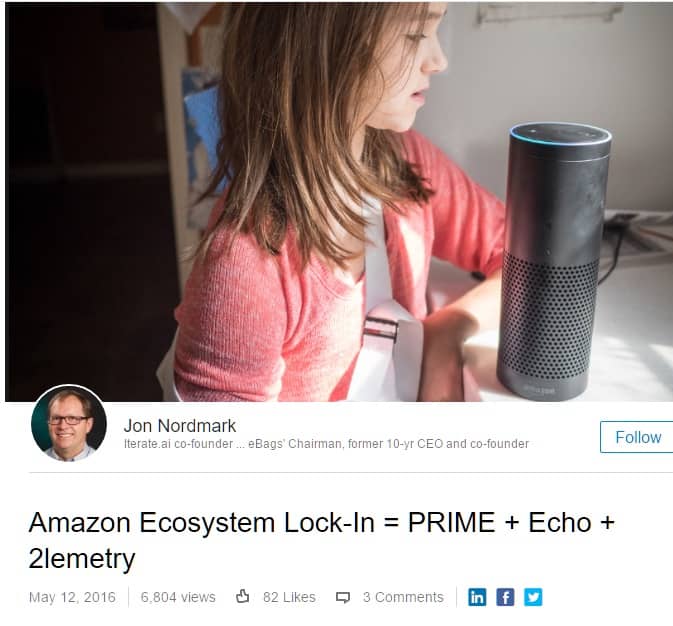
That same content can be utilized for acquisition in social channels if your sales team comes across a prospect with a relevant concern. It’s as simple as sharing that top-of-funnel content.
Go Make Those Sales
Sales teams develop a deep understanding of the buyer’s journey putting them in the best position to map the most appropriate content to buyer’s journey they move toward a close. When you close the gap between your sales and marketing teams and open the communication pipeline, your sales team will be able to leveraging the right content, at the right time.
It’s the most effective way to build stronger relationships and develop a lasting trust with prospects – and you’re guaranteed to increase the velocity and rate of lead conversions resulting in unprecedented revenue growth.


Leave A Comment